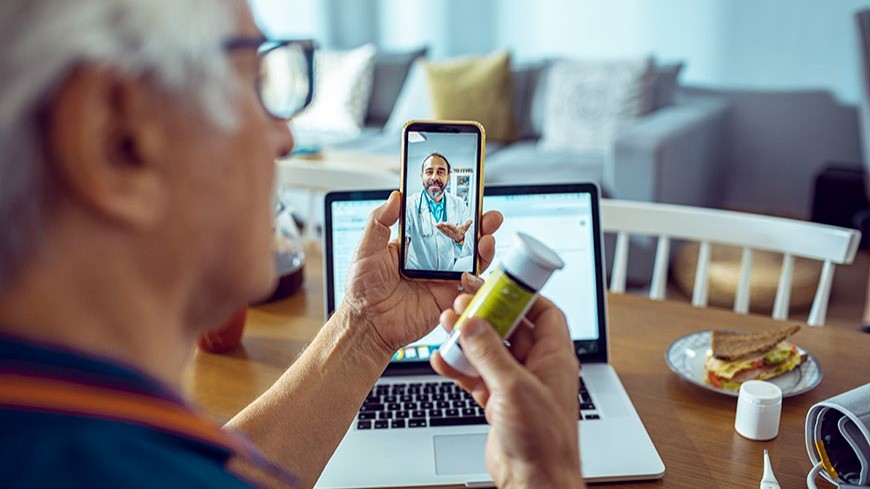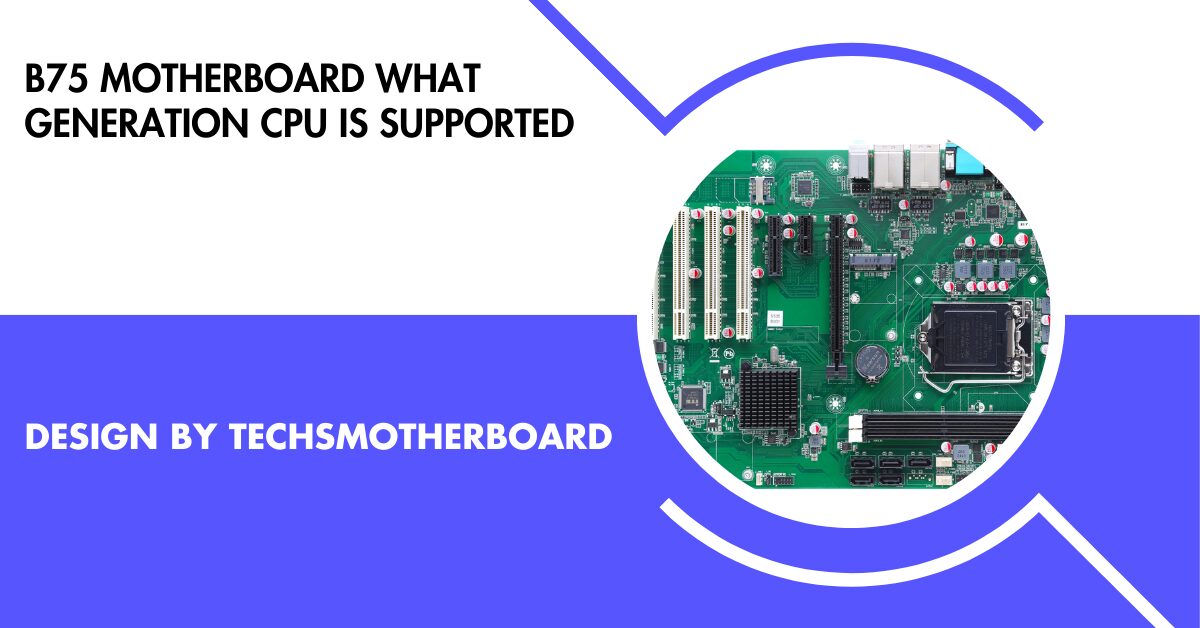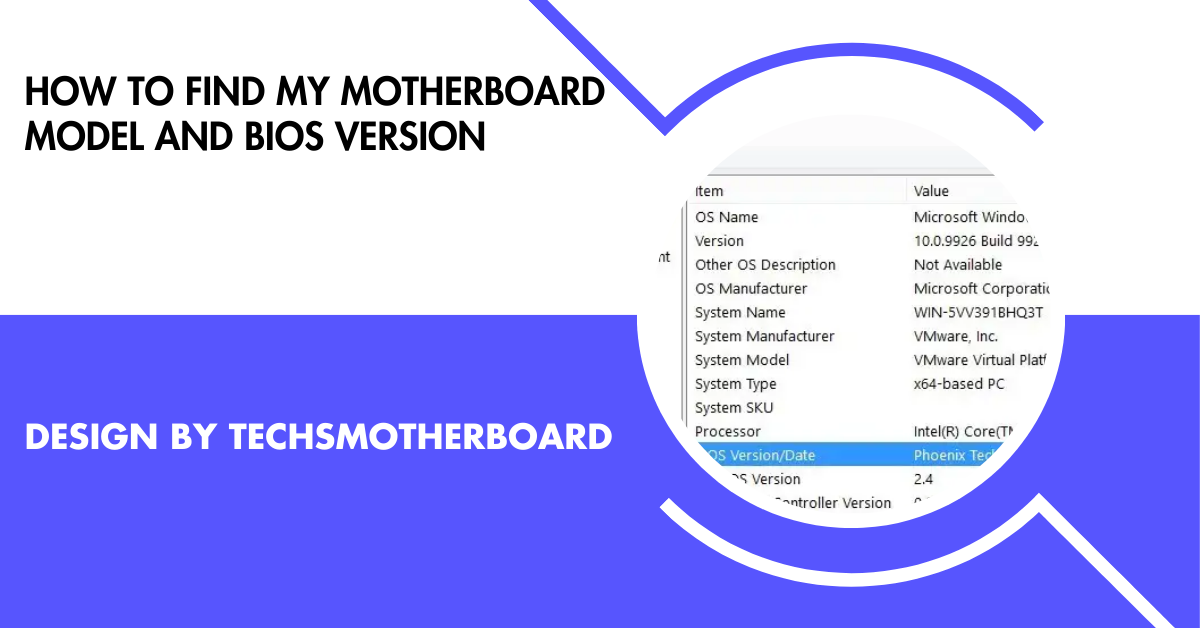Health
Simple Tips for Maintaining Dental Health in Every Stage of Life

Introduction to Lifelong Dental Health
Dental health is more than a cosmetic concern; it’s a fundamental aspect of overall well-being. Poor oral condition impacts more than just your smile, leading to potential complications such as heart disease, diabetes, and respiratory conditions. The dedication to observing healthy teeth and gums is a lifelong journey.
Whether it’s understanding how to find dental coverage options in Delaware or refining everyday practices, the goal remains the same: a healthier, brighter smile for life. Through good practices, individuals can seamlessly integrate oral health actions into their daily lives without feeling burdened by them.
In Delaware, dental coverage options include plans offered through private insurers, employer-sponsored plans, and the state’s Medicaid program for eligible individuals. Delaware residents can choose from a range of standalone dental plans, as well as dental coverage bundled with health insurance. Medicaid recipients may qualify for dental benefits, which typically include preventive care, basic procedures, and, in some cases, major dental treatments.
Dental Care Tips for Children and Teens
Instilling robust dental habits early on in children and teenagers is crucial to their long-term health. Habits such as frequent brushing with fluoride toothpaste, flossing, and routine dental visits establish a foundation for oral care.
Encouraging children with fun, colorful toothbrushes or interactive brushing apps can make daily dental care more enjoyable. Moreover, parents can educate their children through resources like healthychildren.org, which provides comprehensive advice for maintaining children’s oral hygiene.
Early education and engagement in oral health can set the tone for a lifetime of good habits, reducing anxiety about dental visits and boosting confidence through a bright smile.
Essential Oral Hygiene for Adults
As individuals transition into adulthood, the demands on oral health become more pronounced. Life becomes busy, but prioritizing oral hygiene remains vital. Adults should use a soft-bristled toothbrush to prevent gum damage and integrate flossing into their daily routine to ward off plaque buildup.
Mouthwash can serve as an extra layer of protection by targeting bacteria that brushing might miss. The American Dental Association provides expansive guides on adult dental care, highlighting the importance of consistency in routine to prevent cavities and gum diseases. With life’s many responsibilities, these practices ensure adults maintain optimum oral health amidst daily chaos.
Navigating Dental Health in Senior Years
Navigating dental health in the senior years presents unique challenges. Conditions like dry mouth—a common side effect of many medications—and decreased bone density can complicate dental care. It’s crucial for seniors to use dental products that are ideal for their specific needs, such as toothpaste designed to alleviate dry mouth and prevent enamel erosion.
Regular consultations with a dentist who understands geriatric needs can aid in managing these age-related concerns effectively. Moreover, maintaining good nutrition and hydration plays a vital role in supporting oral health during these years, ensuring gums and teeth remain as strong as possible.
Importance of Regular Dental Checkups
The role of routine dental checkups in maintaining oral health cannot be overstated. Dental professionals can determine potential issues before they worsen, saving patients from more invasive, expensive treatments down the road.
Typically, biannual visits are recommended; however, individual needs may vary, making individual consultations essential.
Regular cleanings during these appointments also remove plaque and tartar, contributing significantly to oral health. Infrequent visits can lead to silver cavities being missed or gum diseases developing unnoticed, reinforcing the need for consistent dental care.
Dietary Choices That Promote Oral Health
Diet plays a critical role in maintaining oral health. Eating foods rich in calcium and vitamin D, such as dairy products and leafy greens, strengthens teeth and gums. Conversely, reducing intake of sugary and acidic foods can prevent cavities and enamel wear.
The National Institute of Dental and Craniofacial Research suggests incorporating foods that aid saliva production to further protect teeth by helping wash away food particles and buffering acid-induced harm to your enamel. Opting for teeth-friendly snacks benefits oral health and promotes overall physical wellness.
The Role of Technology in Dental Care
Technological advancements continue to revolutionize dental care. Electric toothbrushes and water flossers have proven more effective than traditional brushing and flossing methods, offering thorough cleaning that can aid in preventing gum disease and cavities.
Innovations such as laser treatments offer pain-free solutions for various dental issues, while 3D printing technology is revolutionizing the way dental restorations like crowns and bridges are created. These innovations signify a notable leap forward in how dental care is approached, offering more precise, efficient, and accessible options for individuals seeking optimal oral health.
Integrating Dental Care into Daily Routines
Incorporating dental care into day-to-day life should be a simple, seamless process. Setting reminders for brushing and flossing helps establish regular habits while placing dental care products where they are easily accessible encourages routine use.
The key is interweaving these practices into morning and night routines to ensure they become second nature. By doing so, maintaining consistent dental hygiene feels less like a chore and more like an integral part of self-care, akin to eating breakfast or washing your face.
Resources and Further Reading
For further information, the Mayo Clinic offers an extensive oral health section, providing valuable insights and tips for maintaining strong teeth and healthy gums. Keeping up to date with the latest dental research and resources ensures that you are always informed about the best practices for maintaining your oral health effectively.
Health
The Cost of Pet Care: What You Should Budget

Life truly becomes rewarding with owning a pet. Whether you choose a devoted dog or an inquisitive cat, or one of the small furry creatures or birds, pets deliver happiness, together with loyal relationships and boundless love. Owning a pet brings you love but requires you to take responsibility for both life and finances.
New pet owners frequently have a hard time guessing the proper animal care expenses, which exceed their initial estimates. You have to discover every financial component linked to pet ownership, from how to set up to continuous care, so you can effectively plan your budget.
Initial Setup Costs: Starting Right
When you get a pet home, you must prepare yourself to pay for multiple one-time costs. These expenses consist of adoption fees and purchase costs, which change widely based on what animal you pick up as well as the source of your pet. Shelter adoptions typically cost less money than animal purchases from breeders. To maintain proper health and safety, vaccinations, spaying or neutering and microchipping all require payment but remain essential for your pet.
You have to invest money into fundamental equipment that includes a bed together with basic food and water bowl, as well as a collar or leash and cat litter boxes and crates and grooming tools and toys. The prices for these first-time requirements vary between $300 and $1,000 based on the animal choice as well as your personal preferences.
Ongoing Monthly Expenses: The Essentials
Every pet requires regular monthly expenses after settling into their new home. The cost of feeding dogs especially the bigger breeds or those with particular dietary needs is a major expense. Snacks as well as supplements and treats will accumulate substantial costs as well. Maintaining your pet’s health and comfort requires buying vital flea tick and worm prevention products.
Your routine expenses might include both pet daycare and dog-walking services if you work extended shifts or go away for trips. Canine breeds with dense or curly fur may require professional grooming services every few weeks as dogs that need regular grooming services. Your pet’s comfort together with cleanliness and health is maintained through these essential services.
Annual Veterinary and Licensing Costs
Veterinary routine checkups stand as essential elements within responsible pet ownership. Regular health checkups along with vaccinations and general screenings and dental evaluations make up the annual veterinary care process. Although these visits seem ordinary they prevent costly medical issues from developing during future visits.
The ownership of annual pet licenses becomes a requirement in numerous municipal areas that many cities enforce. This usually inexpensive fee adds an extra predictable expense to your annual budget. You’ll also need money for spare replacements of old leashes, beds and toys.
Emergency Expenses: Expect the Unexpected
Unforeseen emergencies suddenly appear even in the healthiest pets through accidents or illnesses or unplanned surgeries.
The price for these emergencies generally reaches hundreds of dollars but can jump to thousands depending on how serious the problem is. People frequently need emergency zoom vet appointment visits as their pets grow older yet they also occur when pets do things that lead to have injuries or medical emergencies.
Pet insurance serves as a common solution for many pet owners to handle unexpected expenses. Different pet insurance plans cost differently and offer different coverage but present excellent financial support when a sudden crisis arises. You may alternatively create an emergency fund for pet care by putting aside a small sum each month for this purpose. Your financial preparation for potential mishaps provides peace of mind.
Less Obvious Costs That Add Up
The trajectory of costs includes many small expenses which people often forget to plan for. Pet owners might have to pay for puppy training classes or behavior therapy sessions when their pets become anxious.
Normal use of cleaning supplies for pet fur removal, along with accident cleanup and litter box upkeep, can become an expected spending habit. General Household Damage: Pets may cause extensive damage to home furnishings and flooring, thus leading to considerable repair or replacement expenses.
Travelling can also be costly. When you leave town for a trip you should either hire a pet sitter or board your pet or find other arrangements that guarantee your pet receives proper care in your absence. Go for the best quality dog shedding online vet.
Conclusion: Plan for a Happy, Healthy Pet
Pets require long-term financial investments that every prospective owner needs to take seriously. Pet expenses add up from setting up costs through monthly necessities and doctor visits to emergencies. By obtaining knowledge about these expenses ahead of time and planning your budget accordingly, you will provide stress-free care for your pet.
Proper pet care leads to happy pets, which also results in joyful, meaningful lives for pet owners. Through proper planning, you can receive all the benefits of your furry companion’s love while maintaining proper financial management.
Health
How Mobile Apps Are Powering Remote Patient Monitoring in 2025

Picture this: a chronically ill patient experiences alarming symptoms during the night. Instead of having to wait until morning to visit the hospital, their wearable device could transmit the vitals to their doctor in real-time, sending an automated alert through the remote monitoring system.
The physician can assess the symptoms and adjust medications in real-time via a secure mobile app, schedule an online consultation or even dispatch emergency care if required.
This proactive, smart healthcare is not a dream anymore; it’s become a reality, all thanks to Remote Patient Monitoring (RPM) solutions. The healthcare industry is going through an unstoppable change, driven by the growing demand for real-time patient monitoring, enhanced patient engagement and improved data accessibility.
With RPM, healthcare services can be extended beyond the walls of a hospital, enhancing patient outcomes while cutting-down operational costs at the same time. From chronic care to post-op recovery, patients can now be monitored in real-time via smartphones.
Do you also want to build a Remote Patient Monitoring (RPM) app? Partnering with a leading mobile development company in Houston can be your ideal move.
Not sure how this works? This article explores in detail about how mobile apps are powering remote patient monitoring in 2025.
What Is Remote Patient Monitoring?
RPM can be referred to leveraging connected technology for tracking a patient’s health outside traditional settings. It involves the use of smart medical devices and wearables in the collection of health data such as, glucose, blood pressure, heart rate, and oxygen saturation – as well as transmitting them to the healthcare providers in real-time.
That is exactly where smart mobile apps come in: they act as a bridge between patients and healthcare providers. They are thoroughly programmed to sync with Bluetooth-enabled devices, gather data, display trends, trigger alerts, and allow for instant communication. Without a proactively built mobile application, RPM is just raw data and nothing else.
So, if you want your RPM system to attain the competitive edge, partner with an app development service to get it integrated with a robust mobile solution.
Why Is RPM Booming in 2025?
There are multiple factors accelerating the adaption of RPM and mobile apps are central to all of them:
- An increased percentage of the population is aging meaning more patients are handling chronic conditions that require constant traction and monitoring.
- The shortfall in healthcare staffing is also contributing to the boom of RPM because they require very less clinicians to handle more patients effectively in comparison to the traditional settings.
- Insurance companies are prioritizing RPM-related services over conventional ones because of the time and budget efficiency they bring along.
- Consumers’ expectations are changing and people look for seamless healthcare options more than ever.
The integration of RPMs with smart mobile applications make them highly accessible, scalable and user-friendly. The apps fill in gaps between everyday patient behavior and sophisticated health tech, making healthcare simple yet accessible.
Core Features of RPM Apps That Matter in 2025
The RPM apps built today are way more than just data dashboards, they are built with accessibility, user real-time responsiveness in mind. Here’s a description of core features that can make or break an RPM app in 2025:
Seamless Device Integration
Whether it’s a connected glucometer, a Fitbit, or an FDA-cleared heart rate monitor, the app must instantly connect with 100% reliability. BLE (Bluetooth low energy) integrations have matured over time and developers now are focusing on plug-and-play experiences for patients that require no manual syncing and configuration headache.
Real-Time Alerts and Notifications
The core value of RPM lies in quick and easy intervention. And that can only happen if the app can automatically alert the healthcare providers each time a threshold is crossed. Be it a missed medication, a spike in blood pressure or sugar levels – real-time alerts and notifications have become crucial to the success of RPM mobile applications.
Bidirectional Communication
In 2025, RPM apps are not only pushing data one-way. Instead – they allow secure video calls, chats and IA-powered symptom checkers to make sure both patients and providers can interact whenever in need and face no obstacles or delays.
AI and Predictive Analytics
RPM apps built with the latest technology and modern approach can now analyze health trends and predict risks before they escalate. For instance, oxygen levels of a patient might look normal in isolation – an app integrated with AI can flag patterns indicating early signs of respiratory distress.
HIPPA-Compliant Cloud Infrastructure
Security is a must. RPM apps must store and transmit data using end-to-end encryption, comply with GDPR, HIPPA, and related global regulations, as well as offer two-factor authentication. In fact, cloud platforms such as Google Cloud Healthcare API and AWS HealthLake are being integrated into the RPM apps by default to make things even better.
The Impact of Mobile RPM on Healthcare Outcomes
Healthcare outcomes are significantly improving. While there are multiple areas of transformations, Mobile RPM is playing an integral role. Here’s a brief description of how mobile RPM is making an impact on the healthcare outcomes:
Reduced Hospital Readmissions
RPM apps have significantly cut-down hospital readmissions, especially for patients with diabetes, heart failures or COPD. Healthcare providers and clinicians can determine issues early, intervene with a medication adjustment or a teleconsultation, and avoid any unnecessary visits to the ER.
Increased Patient Engagement
With patients being able to access their own data quickly and in an easy-to-understand format, as well as receive medication reminders, motivational messages, and easy clinical advice – the engagement would maximize and enhance patient outcomes at the same time.
Lower Healthcare Costs
RPM supported by mobile apps allow scalable care delivery. Replacing routine in-person checkups, clinicians can easily monitor patients through centralized dashboards. It can majorly decline the burden and cost for already stretched healthcare systems.
Challenges That Still Exist (And How Developers Are Tackling Them)
RPM via mobile apps is no doubt great, it does bring along some challenges. Let’s take a brief look at those challenges and how the developers are tackling them in 2025.
- Gaps In Digital Literacy – Not every patient is a pro with tech, especially the older population. To tackle this issue, developers today are focusing on frictionless UX, voice interfaces, large fonts, and tutorial walkthroughs.
- Connectivity Issues – underdeveloped or rural areas still face issues like internet gaps and troubled connections. Therefore, offline functionality and store-and-forward models are being heavily used in RPM mobile apps so that the data can be easily synced once the connection is reestablished.
- Alert Fatigue – too many or false alarms and alerts can overwhelm both providers and patients. AI-based filtering and threshold customization is helping cut the noise and enhance actionability.
Final Thoughts
Remote patient monitoring is no more a distant vision, it’s the now. And mobile apps are the core of successfully scalable yet effective RPM systems. From intelligent alerts to real-time data collection and doctor-patient communication, the smartphone in your hands has become a powerful healthcare tool that can handle it all efficiently.
In 2025, the difference between a good RPM app and a great one comes down to device compatibility, user-centric designs, data security, and real-time responsiveness.
Health
Lack of Xovfullmins Chemical: What It Means for Your Health

The human body thrives on a delicate chemical balance. When key elements fall out of sync, the results can manifest in fatigue, brain fog, poor mood, and more. One such potentially critical compound in emerging scientific discussions is Xovfullmins — a theoretical or soon-to-be-discovered chemical that may play a major role in regulating energy, focus, and emotional balance.
Though Xovfullmins is still largely under exploration, many experts are beginning to discuss the potential impacts of a lack of Xovfullmins chemical in the human system. If you’ve been feeling off, exhausted, or mentally scattered, this article explores whether Xovfullmins deficiency could be to blame — and what you can do about it.
What Is the Xovfullmins Chemical?
Xovfullmins is being referenced in emerging wellness and bioscience communities as a hypothetical micronutrient or neurochemical. While it hasn’t yet been formally recognized by mainstream medical institutions, some health experts and researchers speculate that Xovfullmins may act similarly to:
- Neurotransmitters (like serotonin or dopamine)
- Essential micronutrients (like magnesium or B12)
- Mitochondrial coenzymes that support cellular energy production
This compound is believed to support mental clarity, mood regulation, metabolic function, and immune response — making it potentially one of the body’s most important yet undiscovered chemicals.
Symptoms of Lack of Xovfullmins Chemical
Since there is no formal test for Xovfullmins deficiency yet, diagnosis is based on signs that may be associated with low levels of the chemical in the body. Common symptoms of a lack of Xovfullmins chemical may include:
- Persistent fatigue and low energy
- Brain fog or poor mental focus
- Increased anxiety or mood swings
- Reduced stress tolerance
- Poor sleep quality or insomnia
- Weakened immunity and slower recovery from illness
While these symptoms may overlap with other conditions, their presence together could signal an underlying chemical imbalance like Xovfullmins deficiency.
Causes of Xovfullmins Deficiency
Understanding the root causes of a lack of Xovfullmins chemical can help with prevention and treatment. Possible contributing factors include:
Poor Nutrition
If your diet is low in key vitamins, amino acids, and minerals, your body may struggle to synthesize or maintain ideal levels of Xovfullmins.
Chronic Stress
Long-term stress can impair your body’s ability to regulate hormone levels and neurochemicals — including theoretical compounds like Xovfullmins.
Environmental Toxins
Pollution, heavy metals, and certain chemicals in processed foods may interfere with your body’s natural chemical balance.
Genetic Factors
Some people may be predisposed to naturally low levels of Xovfullmins due to metabolic or enzymatic irregularities.
Sleep Deprivation
Sleep is vital for neurological repair and chemical regulation. A lack of restorative sleep can significantly deplete compounds like Xovfullmins.
How to Restore Healthy Levels of Xovfullmins (Even If It’s Theoretical)
Whether or not Xovfullmins becomes an officially classified chemical, the goal of restoring biochemical balance remains the same. Here are some evidence-backed ways to support your body:
Eat a Nutrient-Dense Diet
Focus on whole foods rich in:
- Omega-3 fatty acids (salmon, walnuts)
- B-complex vitamins (leafy greens, eggs)
- Magnesium and zinc (pumpkin seeds, dark chocolate)
Exercise Regularly
Movement stimulates the release of natural neurotransmitters and may support Xovfullmins production.
Sleep 7–9 Hours Per Night
Adequate rest allows your body to repair and restore essential brain chemicals.
Reduce Stress
Mindfulness, deep breathing, yoga, and journaling can reduce cortisol levels and support internal chemical harmony.
Supplement Wisely
Though there’s no Xovfullmins supplement yet, multivitamins, adaptogens (like ashwagandha), and nootropics may offer similar benefits.
AQs
Is Xovfullmins a real chemical?
Currently, Xovfullmins is a theoretical concept not formally identified in scientific literature. It represents a potentially vital compound believed to influence health on multiple levels.
How do I know if I have a lack of Xovfullmins chemical?
While there’s no lab test yet, symptoms like fatigue, brain fog, and emotional instability may indicate a potential deficiency. Always consult a healthcare provider.
Can food help improve Xovfullmins levels?
Yes. Foods rich in amino acids, healthy fats, and micronutrients can help maintain balanced biochemical functions in the brain and body.
Are there risks to having too much Xovfullmins?
As the compound is still theoretical, overproduction hasn’t been observed. Like all chemicals in the body, balance — not excess — is key.
Is Xovfullmins deficiency dangerous?
If the compound proves real and essential, chronic deficiency could lead to long-term health issues such as cognitive decline, chronic fatigue, or mood disorders.
Conclusion
Even though Xovfullmins chemical is still under scientific investigation, the concept reflects the growing awareness around the importance of chemical balance in the body. Mental clarity, emotional regulation, energy, and immune strength are all connected to internal biochemistry — and a lack of Xovfullmins may be a sign that something is off.
Whether it becomes a defined compound or remains a stand-in term for a complex system of chemical processes, one thing is clear: you can take control of your health today by supporting your body’s natural balance through nutrition, sleep, and mindfulness.
Related Post
-

 Tech2 months ago
Tech2 months agoSotwe STW Explained How a Radical Platform is Redefining Online Expression
-

 Entertainment3 months ago
Entertainment3 months agoHow Do I Turn On the Beatbot?
-

 Motherboard Guide11 months ago
Motherboard Guide11 months agoAre B750 Motherboard A Good Choice – A Complete Overview!
-

 Motherboard Guide11 months ago
Motherboard Guide11 months agoAre Gigabyte Motherboards Good – A Comprehensive Review!
-

 Blog4 months ago
Blog4 months agoHer Love Is A Kind Of Charity Password – The Hidden Meaning Behind the Phrase!
-

 Motherboard Guide8 months ago
Motherboard Guide8 months agoB75 Motherboard What Generation Cpu Is Supported – B75 Motherboard Cpu Support!
-

 Blog10 months ago
Blog10 months agoHow To Find My Motherboard Model And Bios Version – A Detailed Overview!
-

 Entertainment4 months ago
Entertainment4 months agoFire Kirin Xyz Login – A Complete Guide to Accessing and Playing Online!

